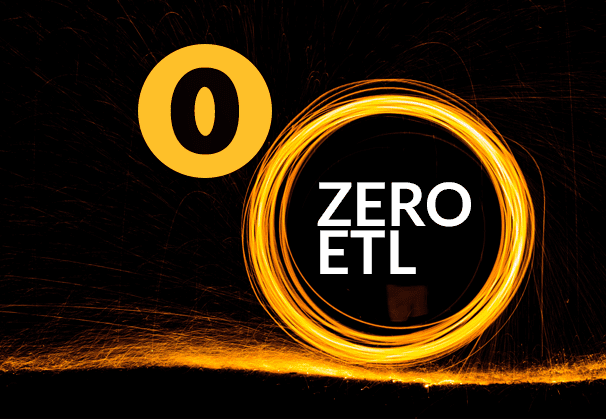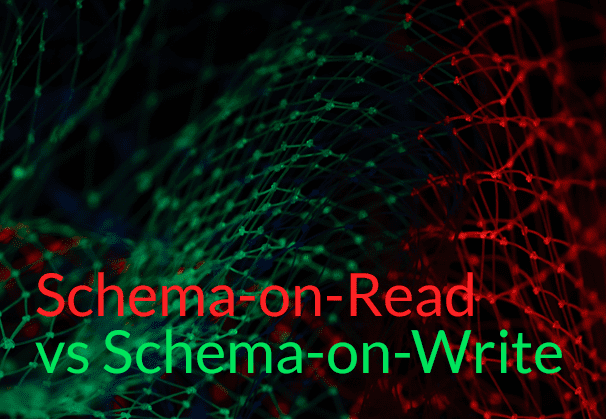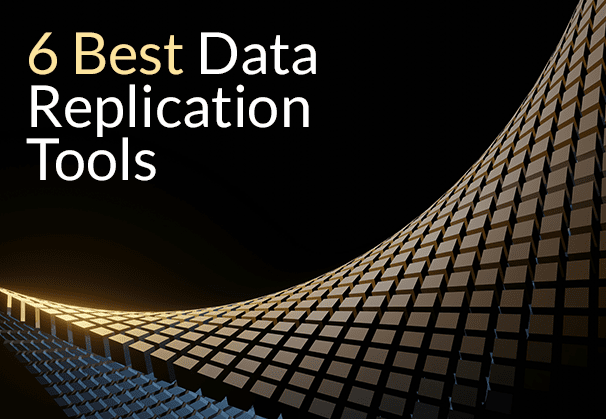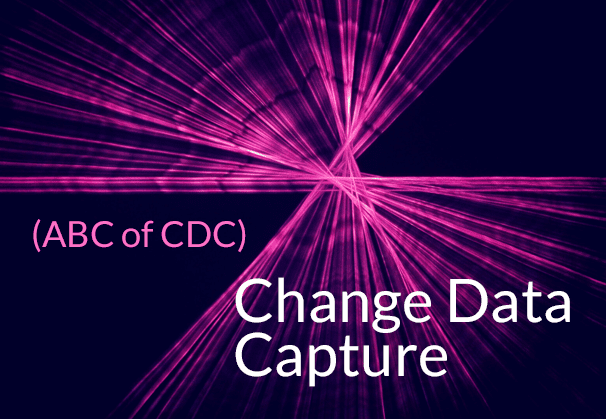Zero-ETL and its role in data integration is the topic of this blog. What is Zero-ETL, and how is it different from traditional ETL? How does Zero-ETL integration work, and which data patterns can be considered to be part of the Zero-ETL universe? Besides answering these questions, we also look at the benefits and drawbacks of Zero-ETL, and how BryteFlow as a Zero-ETL replication tool seamlessly automates the data integration process. How BryteFlow Works
Quick Links
- Zero-ETL, what exactly is it?
- Traditional ETL is very different from Zero-ETL
- ETL Process and its Challenges
- Zero-ETL Explained
- A Look at Zero-ETL Mechanisms
- Benefits of Zero-ETL Integration
- BryteFlow, a Zero-ETL Replication Tool
- Zero-ETL Highlights of BryteFlow
Zero-ETL, what exactly is it?
So, you want to go Zero-ETL? Not so fast! Zero-ETL may be the shiny new thing in the data science world but is it appropriate for you? Let’s look at what Zero-ETL really implies. As a process, Zero-ETL is really Zero-EL, the transformation phase is done away with. It is a data integration of sorts that moves away from the traditional construct of ETL (Extract Transform Load). Traditional processes use Extract Transform Load processes to move data from one system to another whereas Zero-ETL directly moves the data from one system to another, where it can be queried without time-consuming transformation. It is a simpler, almost instant method of data transfer that does not involve cleaning or modification of data. Successful Data Ingestion (What You Need to Know)
Traditional ETL is very different from Zero-ETL
Zero-ETL and traditional ETL (whether manual or automated) are different animals. The ETL (Extract Load Transfer) process we know has been around a long time now. It involves setting up of ETL pipelines to integrate data from different sources, typically into a staging area where it can be prepared and converted into a consumable format and then loaded into a data warehouse or data repository for data analytics, machine learning, or just storage. Why You Need Snowflake Stages
ETL provides rapid data integration, sometimes in real-time if required, and is ideal for legacy systems. It also enables security checks and privacy controls while integrating data. The ETL process of late is increasingly being replaced by the ELT (Extract Load Transform) process where the data transformation takes place on the data warehouse itself after loading, using the immense compute power of the data warehouse rather than stressing the source systems. ELT on Snowflake with BryteFlow
The traditional ETL process has 3 steps:
- Extraction: The ETL process initiates by retrieving raw data from diverse sources, such as databases, applications, or other platforms. The goal is to capture essential data irrespective of its source. What to look for in a Real-Time Data Replication Tool
- Transformation: Following extraction, the data needs to be refined. Transformation involves enhancing data quality through activities like cleaning, deduplication, and restructuring. This crucial phase ensures that the data adheres to business requirements and is suitable for analysis. SingleStore DB – Real-Time Analytics Made Easy
- Loading: Subsequently, the refined data is loaded into the designated database. This step maintains the information in a central repository, enabling access, analysis, and the generation of insights. Database Replication Made Easy – 6 Powerful Tools
ETL Process and its Challenges
ETL processes, though widely used, come with their own set of challenges such as data quality issues, scalability problems, time constraints, and compliance concerns, which can impede effective data analysis and decision-making. ETL is characterized by its labor-intensive nature, and time-consuming processes, requiring substantial skill and experience.
Here are some key challenges of ETL:
ETL process can have data inconsistencies and conflicts
ETL calls for mapping the data between target and source correctly. You need to map the data to match the required target schema. This includes complex data mapping rules, handling of data conflicts and data inconsistencies. You also need error handling, logging, and notification processes in place apart from data security requirements that can impose a burden on the system. Source to Target Mapping Guide (What, Why, How)
ETL can be time-consuming and expensive
ETL processes, particularly the transformation stage, can be time-intensive, requiring significant efforts to map and convert data into a format suitable for analysis. You will need the involvement of skilled engineers, which will add to data costs. Cloud Migration (Challenges, Benefits and Strategies)
ETL may face performance and scalability challenges
As data volumes increase, ETL processes may experience slowdowns, bottlenecks, and heightened resource demands, posing challenges for organizations requiring near real-time data processing and analysis. If the ETL is not planned for properly, expensive delays may become a routine feature. Successful Data Ingestion (What You Need to Know)
Compliance and Security Considerations in ETL
The handling of sensitive data in ETL processes introduces potential risks such as data breaches or non-compliance with data protection regulations. Industries with stringent data regulations, like healthcare or finance, may find it difficult to ensure ETL processes adhere to compliance standards. This is evident in instances where certain data transformation steps may violate regulations related to data masking or anonymization. Data Migration 101 (Process, Strategies, Tools & More)
Data Quality Concerns with ETL
Throughout the ETL process, data undergoes multiple movements and transformations, each with the potential to introduce errors that can compromise data integrity. Transformation errors can propagate across the data pipeline, resulting in inaccurate analyses and decision-making. How to Select the Right Data Replication Software
Zero-ETL Explained
Zero-ETL is a set of integrations designed to eliminate the need for traditional Extract, Transform, and Load (ETL) data pipelines. Zero-ETL allows you to bypass the time-consuming data transformation phase and facilitates point-to-point data movement between systems, allowing for fast and efficient data transfer. In a Zero-ETL implementation, data is transferred directly from one system to another without any intermediate steps to transform or clean the data. This Zero-ETL approach is appropriate for situations where no complex data transformation or manipulation is needed. In that sense, data replication tools too are Zero-ETL. A data replication tool such as BryteFlow will move data in real-time with out-of-the-box data conversions, to deliver ready-to-use data on destinations. Learn how BryteFlow Works
A Look at Zero-ETL Mechanisms
There are some other mechanisms that fall under the umbrella of Zero-ETL. The Zero-ETL process assumes native integration between sources and data warehouses (native integration means there is an API to directly connect the two) or data virtualization mechanisms (they provide a unified view of data from multiple sources without needing to move or copy the data). Since the process is much more simplified and the data does not need transformation, real-time querying is easily possible, reducing latency and operational costs. We will now provide you with a little more information on Zero- ETL patterns. How to Select the Right Data Replication Software
Zero-ETL with Data Virtualization
Data virtualization is a process that enables software to retrieve and work with data from multiple sources without having to copy or move the data, or even needing technical details about it, including its formatting or physical location. Data virtualization creates a unified view of data from different sources that can be virtually viewed via a dashboard or data visualization tool. No data transformation or data movement is required.
Please note, data virtualization is not replication, it maintains metadata and integration logic for accessing and viewing data where it resides. Software vendors who provide this software include Oracle, Tibco Software, IBM, Denodo Technologies, SAP, and Microsoft.
Data virtualization is a Zero-ETL process and enables users to use data fast from sources such as Cloud and IoT systems, legacy databases, big data platforms, at low cost, as compared to the expense of physical data warehousing and ETL. How to slash Snowflake costs by at least 30%
Zero-ETL with Real-Time Data Streaming
Real-time data streaming aggregates and ingests data from different data sources continuously and incrementally in the same sequence it was created, and processes data in real-time to derive insights. Streaming data includes log files of users, ecommerce transactions, social media data, financial trading data, geospatial data, sensor data from devices etc. Apache Kafka, Amazon Kinesis, StreamSQL, Google Cloud Data Flow, Apache Flink etc. are some platforms that provide real-time data streaming. Learn about Kafka CDC and Oracle to Kafka CDC methods
Zero-ETL with Schema-on-Read
With the schema-on-read technique, data is stored in its raw format and schema is applied only when it is read. This enables a single data set to be used for different use cases but stored only once. Schema-on-Read makes data agile because it can be landed with very little effort and then consumed immediately. Data loading is also very fast since the data does not need to comply with any internal schema for reading or parsing. Technologies like Apache Hadoop and Apache Spark enable Schema-on-Read. Why Machine Learning Models Need Schema-on-Read
AWS Zero-ETL examples
Zero-ETL schema-on-read examples in the AWS ecosystem include Aurora’s Zero-ETL integration with Amazon Redshift that combines the transactional data of Aurora with the analytics capabilities of Amazon Redshift. Data in Amazon S3 can also be queried with Amazon Athena or Redshift Spectrum as a Zero-ETL process, since the data does not need ETL or transfer to Redshift for analytics. Using federated query in Amazon Redshift and Amazon Athena, companies can query data stored in their production databases, data warehouses, and data lakes, for insights from multiple data sources – no data movement required. BryteFlow supports Amazon Athena and Redshift Spectrum for Zero-ETL querying of data on Amazon Redshift. Learn how to make performance 5x faster on Athena. To know more about how AWS is creating a Zero-ETL future, click here
Zero-ETL with Data Lakehouse Technology
Data Lakehouse also provides Zero-ETL. The Data Lakehouse essentially combines the analytical capabilities of a data warehouse and the data storage facility of a data lake. It can allow you to access and use data for multiple purposes like BI, Machine Learning or Analytics besides storage of data. What to look for in a Real-Time Data Replication Tool
A data lakehouse comprises of five layers: ingestion layer, storage layer, metadata layer, API layer, and consumption layer. The ingestion layer gathers data from different sources. The storage layer stores structured, unstructured, and semi-structured data in open-source file formats such as Parquet or ORC. The metadata layer is a unified catalog that provides metadata for objects in the lake storage, helping in organizing and providing information about the data. The API layer helps in task processing and conducting advanced analytics by providing consumers access to various languages and libraries so data assets can be consumed easily. The data consumption layer hosts client apps and tools, with the capability to access all metadata and data stored in the lake. SingleStore DB – Real-Time Analytics Made Easy
Users can use the lakehouse for analytical tasks such as BI dashboards, data visualization, and machine learning tasks. The important thing to remember is that the data does not need to leave the data lakehouse as in normal ETL processes and can be accessed using simple SQL. The raw data can be queried in the lakehouse itself without being moved or transformed, by using query engines such as Apache Spark. The open data formats like Parquet and ORC enable data scientists and machine learning developers to consume the lakehouse data with tools like Pandas, PyTorch and TensorFlow. Data Lakehouse platforms include Databricks Lakehouse, Amazon Redshift Spectrum and Google BigLake.
Databricks Lakehouse and Delta Lake (A Dynamic Duo!)
Zero-ETL with Instant Data Replication Tools
Some data replication tools can also be classified as Zero-ETL tools in a sense, since they bypass the data transformation process by extracting data, automating data conversion, schema and table creation, and delivering the data to target in a consumable format like Parquet or ORC. One such automated data replication tool is our very own BryteFlow. BryteFlow delivers data from multiple sources using log-based Change Data Capture to various destinations on-premise and on Cloud platforms like AWS, Microsoft Azure and GCP. BryteFlow also supports creating a data lakehouse on Amazon S3 without the requirement of third-party tools such as Apache Hudi. Build an S3 Data Lake in Minutes
Benefits of Zero-ETL Integration
Adopting Zero-ETL can help save a lot of time and help you access data faster, leading to timely, high quality business insights. With Zero-ETL we are sidestepping the whole issue of data preparation and transformation and even data movement (in some cases). You also save on the sizeable compute costs of the data warehouse. The Zero-ETL process offers a streamlined, simplified approach for data integration, doing away with the complexity and potential issues that can be a side-effect of multiple data processing phases.
Zero-ETL offers several benefits for organizations:
Zero-ETL enables better data quality and increases usability of data
Zero-ETL has fewer processes, so it reduces the risk of errors, especially glitches that take place in the data transformation phase. This reduced risk helps to maintain better data quality, helping you get the most from your data.
Zero-ETL makes data handling more flexible
Zero-ETL enables you to use data from different sources and data types. Since data does not have to be transformed and loaded to a central warehouse, businesses do not have to deal with changes in data structure and formats, which can be time-consuming. It allows inclusion of new data sources without needing to re-process data.
Zero-ETL helps in accessing data faster
Since Zero-ETL avoids time-consuming data transformation processes, data is available for analysis that much faster. This streamlines the data workflows, leading to faster insights and effective decisions.
Zero-ETL increases productivity
The Zero-ETL process is quick and frees up time for data professionals, to focus on tasks like data analysis and interpretation rather than data preparation, leading to increased productivity and resource optimization.
Zero-ETL can provide real-time, fresher data for analytics
Zero-ETL enables real-time or near real-time data access, providing high quality insights from data in real-time and effective data-driven predictions, as compared to laborious batch processing ETL setups. ELT in Data Warehouse (ETL and ELT: Points to Compare)
Zero-ETL is cost-effective
Traditional ETL depends on the creation of expensive ETL pipelines from multiple sources. In comparison, Zero-ETL uses new data integration methods, and being native to the Cloud and scalable, can help reduce data costs. Traditional ETL demands greater involvement of expert resources and infrastructure which can lead to increased costs. AWS ETL with BryteFlow
Zero-ETL Disadvantages
Now that you know the benefits of Zero-ETL, you should also know its shortcomings. Zero-ETL can be fast to implement but is not suitable for several use cases.
Zero-ETL has data integration constraints
Zero-ETL is appropriate for a few use cases only and may not work in situations where complex pipelines are needed and there is a need to aggregate data from external systems into a specific ecosystem. In such cases data would demand cleaning, standardization, or other complex transformations before it can be consumed for reporting etc. Database Replication Made Easy – 6 Powerful Tools
Zero-ETL may not be a good fit for large organizations
Zero-ETL may be contraindicated where enterprises have a lot of different data sources and where data requirements keep changing. They will still need good old ETL to set up data pipelines to access their data. Data Pipelines, ETL Pipelines and 6 Reasons for Automation
Zero-ETL may affect Data Governance adversely
In the case of usual ETL solutions, there are safeguards and controls to monitor data transfers in respect to data quality and integrity. Zero-ETL, however, is reliant on the systems involved in the transfer for these vital tasks. If the source systems do not have adequate controls in place, safety, reliability, and accuracy of the data might suffer.
BryteFlow, a Zero-ETL Replication Tool
BryteFlow is a no-code, Zero-ETL data replication software that replicates your data using automated CDC. BryteFlow delivers data in real-time from transactional databases such as SAP, Oracle, PostgreSQL, MySQL and SQL Server to on-premise and Cloud destinations like Amazon S3, Amazon Redshift, Snowflake, Azure Synapse, Azure Data Lake 2, PostgreSQL, Google BigQuery, SQL Server, Teradata, Kafka, SingleStore and Databricks.
Our Zero-ETL automated data replication tool is self-service and operates via a user-friendly graphical interface, providing out-of-the-box support for movement of large data volumes. The BryteFlow Ingest tool is extremely fast, capable of transferring petabytes of data within minutes – approximately 1,000,000 rows in just 30 seconds. Additionally, BryteFlow stands out for its rapid deployment, ensuring you get delivery of data within two weeks, compared to the months taken by competitors.
Zero-ETL Highlights of BryteFlow
Here are some highlights of BryteFlow that makes it a superlative Zero-ETL replication tool.
- BryteFlow XL Ingest provides support for moving very heavy datasets fast using parallel, multi-threaded loading, smart, configurable partitioning, and compression while BryteFlow Ingest delivers incremental data and deltas using log-based Change Data Capture to sync data with source.
- BryteFlow as a Zero-ETL tool is completely no-code, automates CDC and the complete data replication process. It provides an option to preserve SCD Type2 history and provides data conversions and compression out-of-the-box (Parquet-snappy, ORC). Oracle CDC: 13 things to know
- It automates data extraction, data masking, schema, and table creation so you get time-versioned, ready-for- consumption data on destination. About SQL Server Change Data Capture
- BryteFlow is a self-service, point-and-click tool with a user-friendly GUI that any business user can use. SQL Server to Snowflake in 4 Easy Steps
- You also get seamless automated data reconciliation with BryteFlow TruData which checks for missing or incomplete data, using row counts and columns checksum.
- BryteFlow also provides end-to-end monitoring of the replication process with BryteFlow ControlRoom.
- BryteFlow delivers low latency, high throughput – approx. 1,000,000 rows in 30 seconds. It is at least 6x faster than Oracle GoldenGate and much faster than Fivetran and Qlik Replicate as well. SQL Server to Snowflake: An Alternative to Matillion and Fivetran
- There is a network catch-up feature that enables the replication process to restart automatically from where it left off, when normal conditions are restored.
Conclusion
We hope this Zero-ETL blog may have been of use to you in deciding whether Zero-ETL as a concept matches your requirements. We have seen what Zero-ETL is, its advantages and drawbacks and the different data integration patterns that can be classified under the Zero-ETL umbrella. We have explained how BryteFlow as a replication tool can provide end-to-end automation for data replication and migration requirements. If you would like to try out BryteFlow or request a demo, please contact us






